“In the future, driving cars will be outlawed. It’s too dangerous to drive around a two-ton death machine,” said Tesla founder Elon Musk.

“In the future, driving cars will be outlawed. It’s too dangerous to drive around a two-ton death machine,” said Tesla founder Elon Musk.

Global Market Comments
October 15, 2018
Fiat Lux
Featured Trade:
(THE MARKET OUTLOOK FOR THE WEEK AHEAD, or OUR HARD LANDING BACK ON EARTH),
(SPY), (QQQ), (TLT), (VIX), (VXX), (MSFT), (JPM), (AAPL),
(DECODING THE GREENBACK),
(DUMPING THE OLD ASSET ALLOCATION RULES)

Truth be told, it’s the really boring, sedentary, go-nowhere markets that drive me nuts, cause me to tear my hair out, and urge me on to an early retirement.
The week started with such promise.
Sunday night I witnessed the first Space X landing of a rocket in California which I could clearly see from the top of Berkeley’s Grizzly Peak some 250 miles away. It was fascinating to see four separate jets steer the spacecraft earthward.
Financial markets had a different landing in mind, the hard kind, if not a crash.
I absolutely love the market we had last week which saw the third biggest down day in history, volatility explode, and $2.6 trillion in stock market capitalization vaporize.
I had to blink when I saw NASDAQ (QQQ) down an incredible 350 points in one day. My Mad Hedge Market Timing Index hit an all-time low at 4.
No wonder insider selling hit $10.3 billion in August, another record. Maybe they know something we don’t.
Chinese Gamer Tencent Postponed their US IPO. It seems they noticed that market conditions had become unfavorable. I know investment bankers hate passing on an opportunity to ring the cash register. I used to be one.
There is no better feeling than being 100% cash going into one of these crashes and then having panicked investors puke their best quality positions to me at a market bottom.
On Thursday, I backed up the truck and issued four perfectly timed Trade Alerts, picking up Microsoft (MSFT), Apple (AAPL), and the S&P 500 (SPY), and covering my short position in the bond market (TLT).
In fact, I believe I had my best week of the year even though I only added modestly to my annual return. Look at the charts below and you’ll see that I suffered a 9% drawdown during the February meltdown. Maybe I’m getting wiser as I get older? One can only hope.
This time, I managed to limit my loss to a modest 2.5% and am nearly unchanged on the month despite the Dow Average at one point nearly giving up all its gains for 2018. This is also against a horrific backdrop of hedge fund performance that is now showing losses for 2018.
The Volatility Index (VIX) made a move for the ages, at one point kissing the $29 handle, up from $11 two weeks ago. During the 600-point swoosh down on Thursday, I couldn’t get any of my staff on the phone. The entire company was logged into their personal trading accounts, buying puts on the iPath S&P 500 VIX Short-Term Futures ETN (VXX) as fast as they could.
Which leads me to believe that the bottom is near. Earnings and valuation support start kicking in big time at these levels, and the blackout period for company share buybacks started ending with the bank earnings last Friday.
When you take a $1 trillion buyer out of the market, it has a huge effect no matter how strong the fundamentals are. Start buying those dips. Their return is similarly eventful. I’ve already started to invest my 95% cash position.
Further eroding confidence was the president’s statement that the Federal Reserve is crazy. So, now we know the president appoints crazy people to the most important financial positions in the country. White House control of interest rates ahead of elections. Why didn’t I think of that?
Sparking the Friday melt-up was a statement by JP Morgan (JPM) CEO Jamie Diamond saying that a 40-basis point rise in rates is no big deal. The bull market is on. His earnings beat all expectations.
My 2018 year-to-date performance has bounced back to 27.56%, and my trailing one-year return stands at 35.87%. October is almost flat at -0.84%. Most people will take that in these horrific conditions.
My nine-year return appreciated to 304.03%. The average annualized return stands at 34.41%.
This coming week will be pretty sedentary on the data front.
Monday, October 15 at 8:30 AM brings us September Retail Sales.
On Tuesday, October 16 at 9:15 AM, September Industrial Production is announced.
On Wednesday, October 17 at 8:30 AM, September Housing Starts are published.
Thursday, October 18 at 8:30, we get Weekly Jobless Claims. At 10:00 we learne the September Index of Leading Economic Indicators.
On Friday, October 19, at 10:00 AM, the September Housing Starts are out. The Baker-Hughes Rig Count follows at 1:00 PM.
As for me, I will spend this week on my Southeastern US roadshow, giving strategy luncheons in Savannah, GA, Atlanta, GA, Miami, FL, and Houston, TX. I love meeting my readers mano a mano who are often a source of my best trading ideas. It looks like I’ll miss Hurricane Michael by three days.
Good luck and good trading.
John Thomas
CEO & Publisher
The Diary of a Mad Hedge Fund Trader

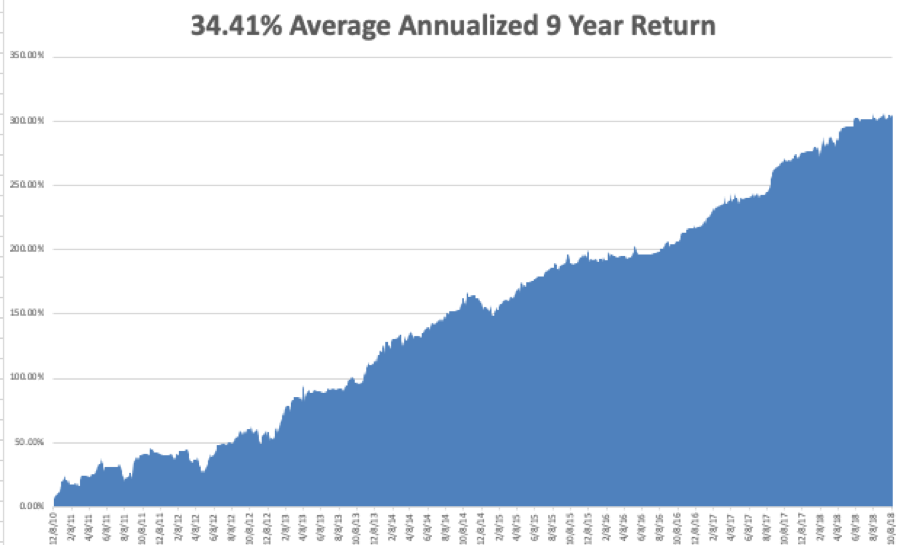
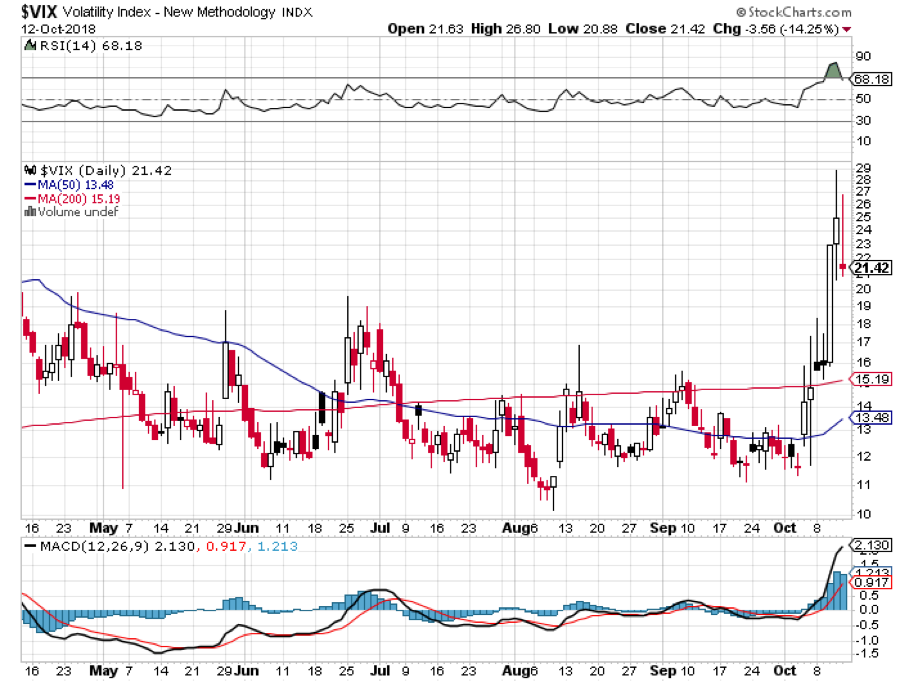
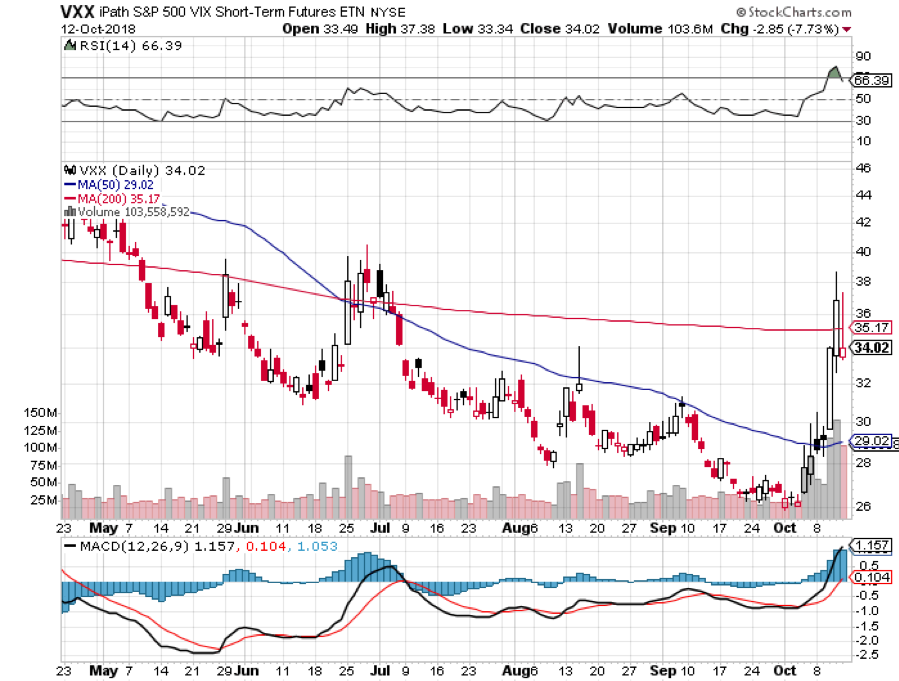
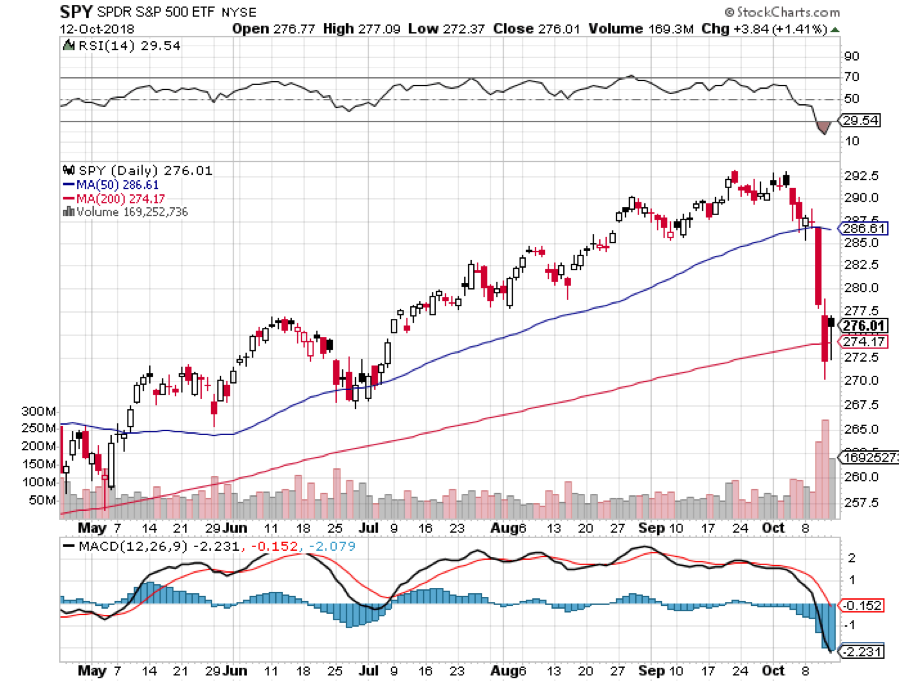
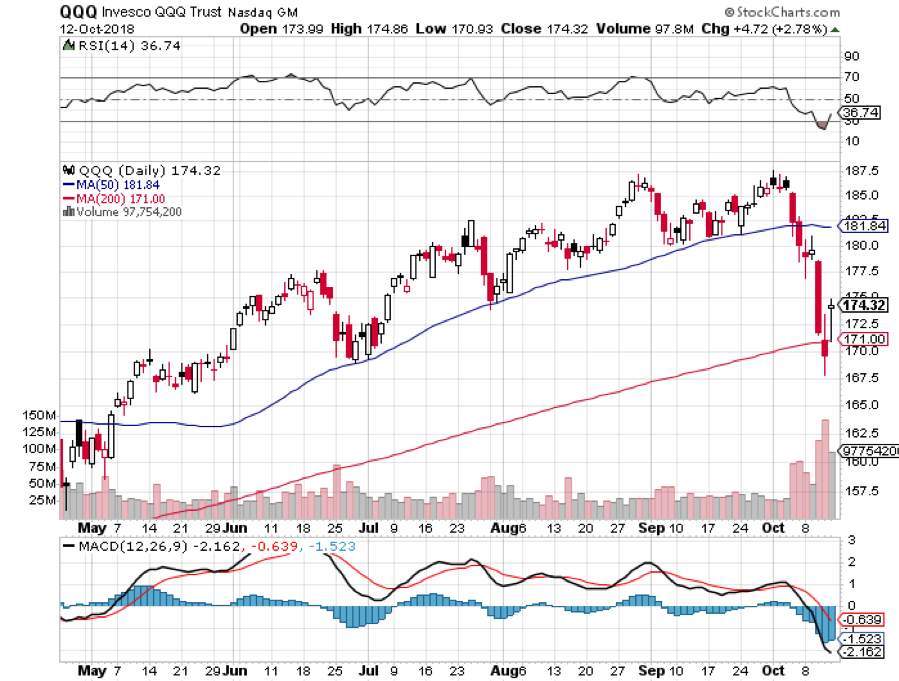

Global Market Comments
October 12, 2018
Fiat Lux
Featured Trade:
(WHY THE STOCK MARKET IS BOTTOMING HERE),
(SPY), (INDU),
(NETFLIX SAYS WE BECOME A NATION OF COUCH POTATOES),
(NFLX), (M), (AMZN), (TSLA), (DIS), (GOOG)

All good things must come to an end, and that includes bull markets in stocks.
But this one is not over yet. If my calculations are correct, the current correction should end right around here over the next week or two. Like the famed Monte Python parrot, the bull market is not dead, it is only resting.
My logic is very simple. In February, the Dow Average suffered a 3,300 point downdraft. However, at least 1,000 points of this was due to the overnight implosion of the $7 billion short volatility industry that spiked the (VIX) up to $50.
That trade no longer exists, at least to the extent that it did in January. There is no Velocity Shares Daily Inverse VIX Short Term ETN (XIV) blow up in the cards at tomorrow morning’s opening.
With the Dow Average down 2,200 points, or 8.14%, from its September high, the major indexes ought to bottom out right around here. I also expect the Volatility Index to peak here at $30.
Incredible as it may seem, the Dow Average has given up almost all of its 2018 gains. Unchanged on the seems to be a point that the market wants to gravitate to, and then sharply bounce off of.
That means the 200-day moving average for the S&P 500 should hold as well near $274, down 6.4% from all-time highs made only last week. That has provided rock-solid support for the index since the bull market began in 2009, except for brief hickeys in 2011 and 2015.
At these prices the PE multiple for the S&P 500 has plunged back down to only 16 times, providing substantial valuation support that has held for years. The economy is still growing at a 4% clip and I expect that to continue through the end of 2018.
The hissy fit between the White House and the Federal Reserve was the principal cause for the Wednesday 831-point selloff. There is a reason why the president has never been allowed to control interest rates in the United States. Telling the citizenry that the “Fed is loco” does not inspire confidence among stock buyers.
If he could, they would be zero, all the time, forever, and the US dollar would have the same purchasing power as the Zimbabwe one or Weimar German Deutsche Mark.
Another crucial factor that investors are missing is that we are now in the blackout period for Q3 earnings when companies are not allowed to buy their own stocks. Companies have almost become the sole buyers of equities in 2018 and are expected to reach a record high of $1 trillion in purchases this year.
A blackout means that the nice guy who has been buying all those drinks has suddenly become stuck in the bathroom for an extended period of time.
That makes the biggest buyers of their own stock like Apple (AAPL), Cisco Systems (CSCO), Amazon (AMZN), and Amgen (AMGN) particularly interesting.
The shackles come off Apple’s buybacks when the Q3 earnings are announced after the close on November 1, a mere 14 trading days away. Apple CEO Tim Cook has committed to buying $100 billion worth of Apple shares.
Finally, my Mad Hedge Market Timing Index, which has been worth its weight in gold, just hit its all-time low at 4 and is flashing an extreme “BUY”. The last time this happened was at the February 8 capitulation low.
Of course, we will probably still see some heart-stopping volatility in the run up to the election. But after that, I still expect a burst to new all-time highs. If my 3,000 S&P 500 target is hit, that means there is a potential 9.5% gain from today’s low.
Investors raced to unload winners in the run up to yearend. Now that many of those winners have become losers, the selling should abate. Oh, and that bond collapse? Bonds have actually gone up since the big stock selling started two days ago, taking yields down from 3.25% to 3.13%. At some point, someone will notice.
Unfortunately, making money in the market is no longer the cakewalk that it used to be. There’s no more loading the boat, and then going on a long cruise. From now on, we are going to have to work for our money.
We may see a bottom this morning when banks announce their Q3 earnings. JP Morgan’s Jamie Diamond starts his conference call at 8:30 AM EST and the entire investment industry will be listening with baited breath.
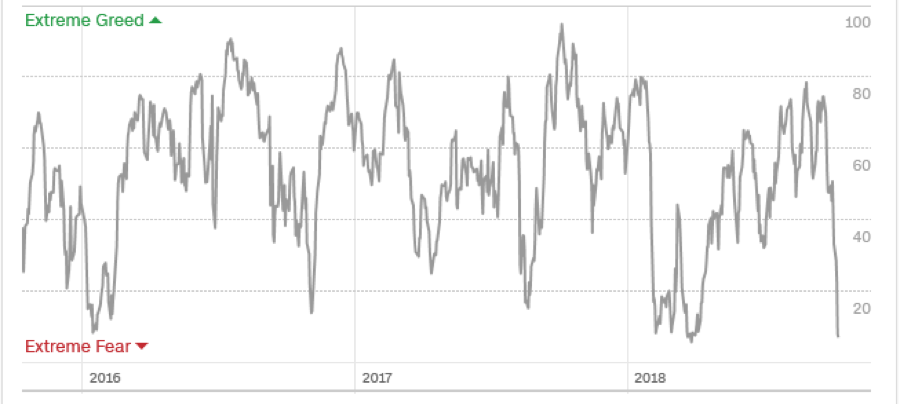
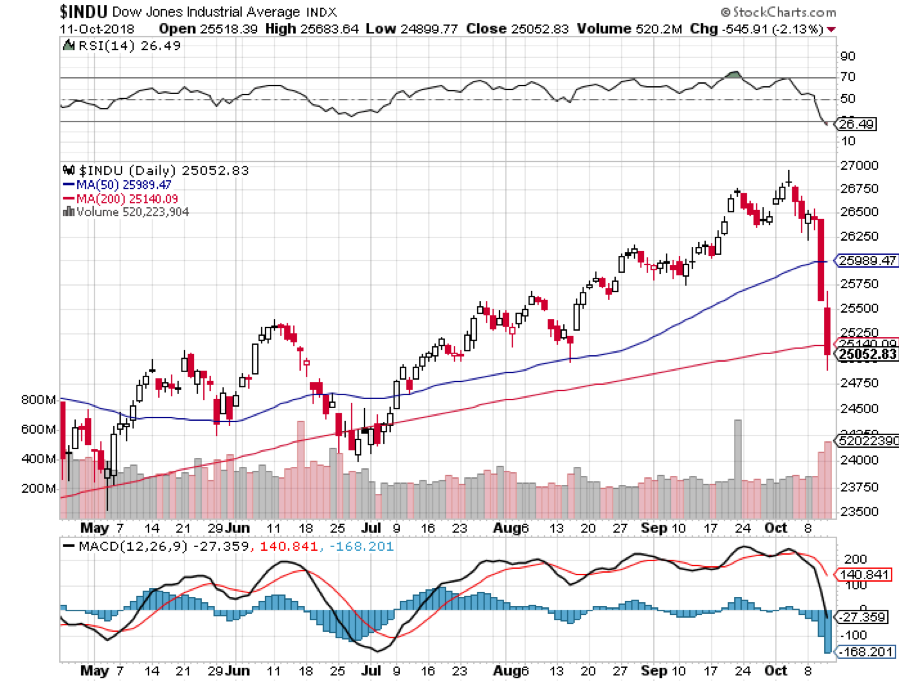
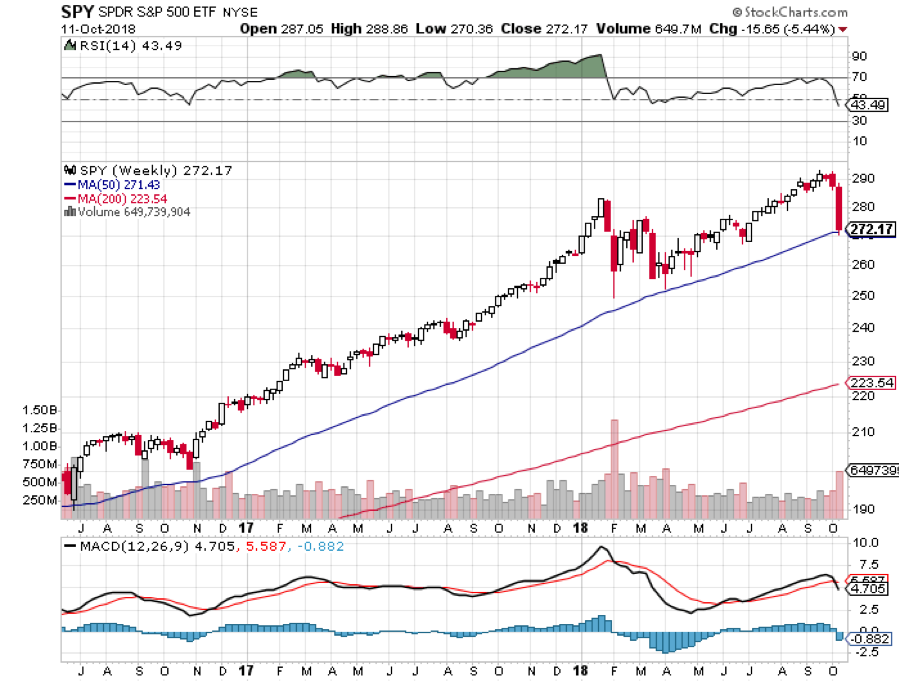
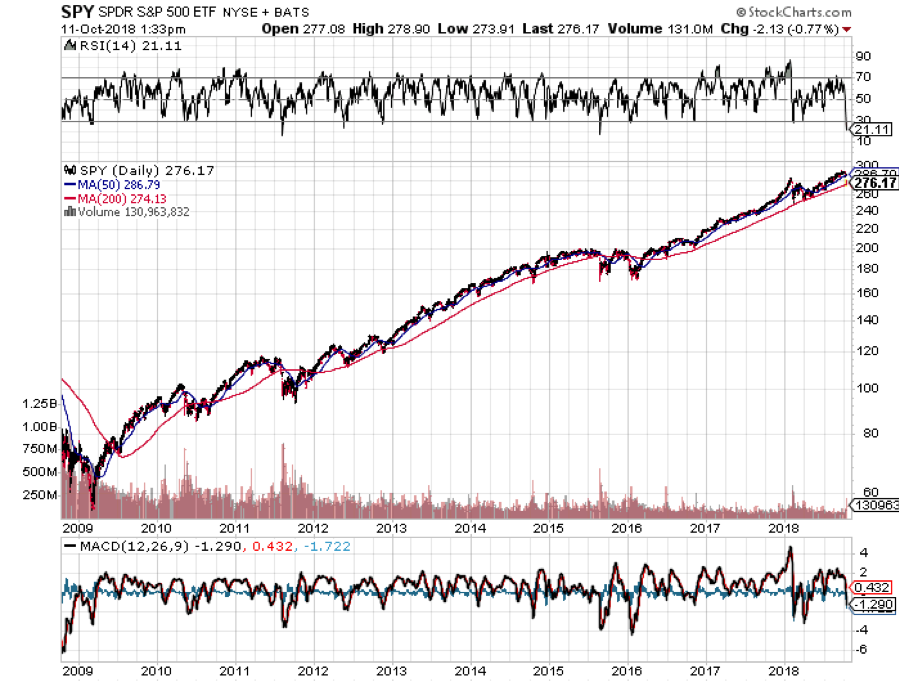
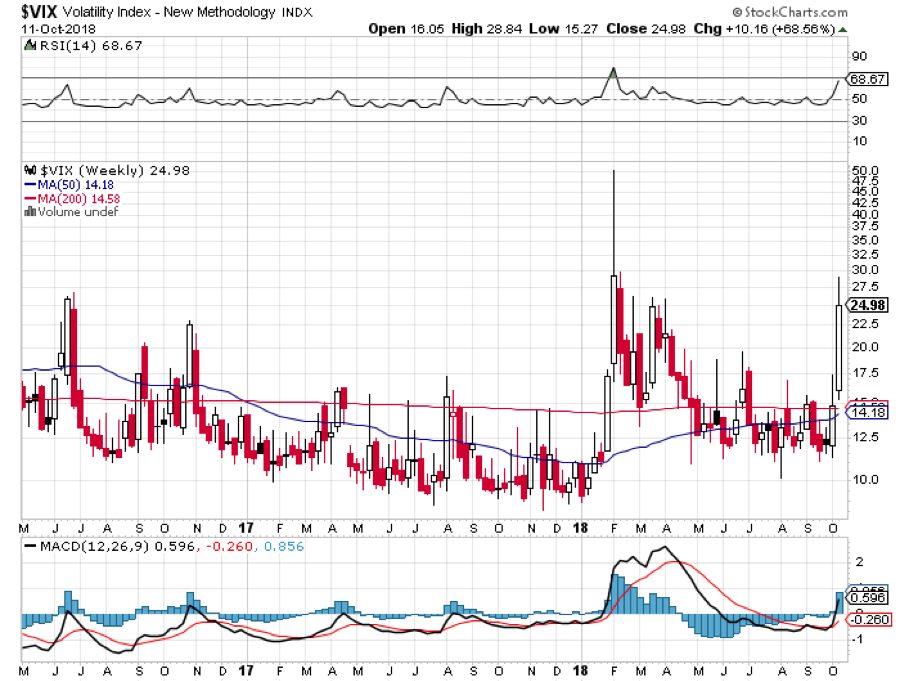

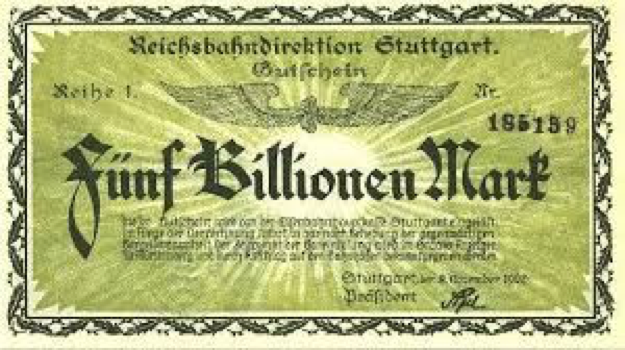
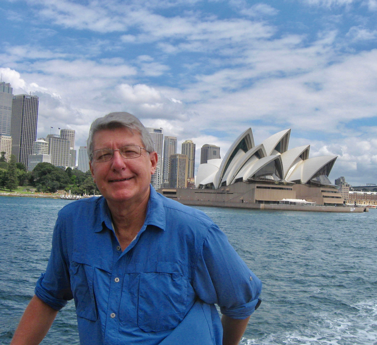
That would be Netflix (NFLX), whose earnings have been on a tear all year, sending the shares soaring.
By this summer the company boasted a staggering 130 million subscribers, with much of the recent growth coming from overseas.
Traders went gaga over the numbers.
Indeed, the firm tracks every keystroke you make.
Watch the sultry tropical thriller Bloodline (sadly scheduled for cancellation), and the company’s clever AI will steer you straight into a like-minded series.
It’s like the “roach motel” network. Once you check in, you can never check out.
Analysts briefly worried about Netflix when Disney (DIS) announced it was pulling its offerings from the omniscient online streaming company, a major seller.
To watch Buzz Lightyear, Woody, and an interminable number of nearly identical princesses (I have three daughters) you’ll have to seek out Disney’s own distribution channel sometime in the future.
But the firm shot back with an $8 billion budget for original content for 2018, in one fell swoop making it one of the largest Hollywood production firms.
Now Netflix is a regular feature of the annual Oscar presentations. Last month it won an impressive 23 Emmys, tying AT&T Warner Media’s HBO for the first time.
They say a picture is worth a thousand words, and I just found 3,000 of them.
Look at three stock charts and you will immediately understand some of the most important structural trends now sweeping through our economy.
Those would be the charts for Amazon (AMZN), Netflix (NFLX), and Macy's (M).
Retail Sales are clearly in a secular long-term decline. Indeed, Macy’s (M) announced last year that it is closing 100 of its 769 stores.
Are these numbers revealing a major new trend in our society? Are we soon to have our every need catered to without lifting a finger?
Have We Become a Nation of Couch Potatoes?
After spending weeks preparing a major research piece for a private client on artificial intelligence, I would have to say that the answer is an overwhelming “Yes!”
Artificial intelligence, or AI, is far more pervasive than you think. Half of all apps now rely on some form of AI, and within five years, all of them will.
Within a decade, AI will cure cancer and most other human maladies, drive our cars, decide our elections, and do our shopping.
You probably all know that Northern California has been besieged with wildfires lately.
Guess what has suddenly started populating my screen? Adds for smoke detectors!
AI has become the leading market theme for 2018.
People my age all remember George Jetson, the space age cartoon series, who only had to work an hour a day because machines did the rest of the work for him.
The modern incarnation of his ultra-light workweek will be far darker and more sinister.
Instead of a one-hour day, it is far more likely that one person will keep a full time eight-hour a day job, while another seven unfortunates become full time unemployed.
By the way, I am determined to be that one guy with a job. So should you.
Indeed, I am increasingly coming across dire predictions that 30% of all jobs will disappear within ten years.
I’m sure that they will.
The real question is whether that 30%, or more, will be replaced by jobs yet to be invented. I bet they will.
Evolution and creative destruction are now happening on fast forward.
After all, some 25% of the professions listed on the Department of Labor website did not exist a decade ago.
SEO manager? Concert social media buzz creator? Online affiliate manager? Solar panel installer? Reputation defender?
What does the stock market do in this new dystopian society? It goes through the roof.
After all, far fewer workers creating a greater output generate much larger earnings that send share prices soaring.
It is all a crucial part of my “Golden Age” scenario for the 2020s.
Having said all that, I think I’ll go binge-watch Netflix’s tropical film noir “Bloodline.” I hear it’s hot.
“Game of Thrones” and “House of Cards” don’t restart until next year.
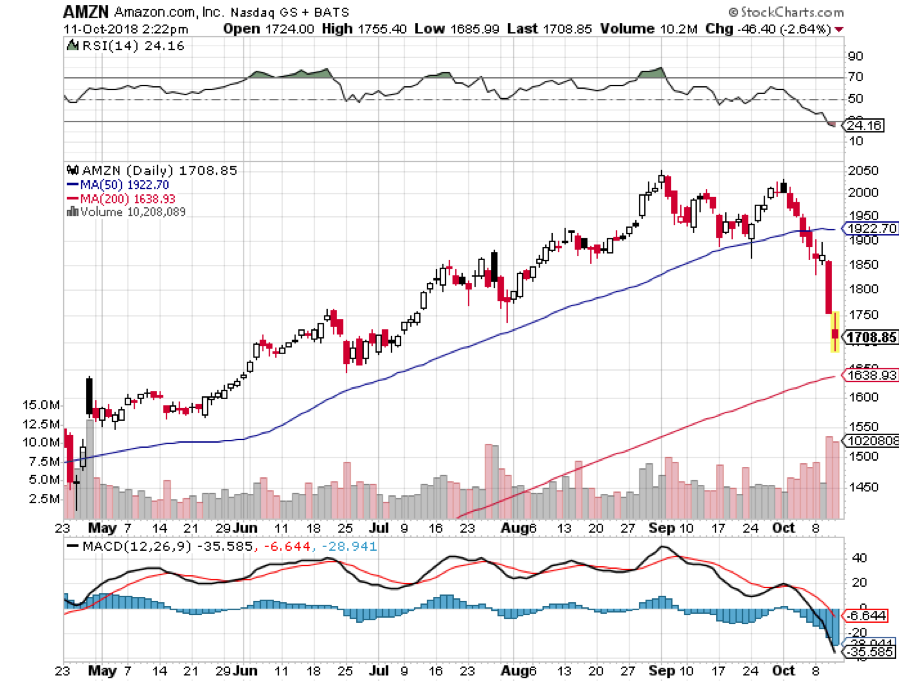
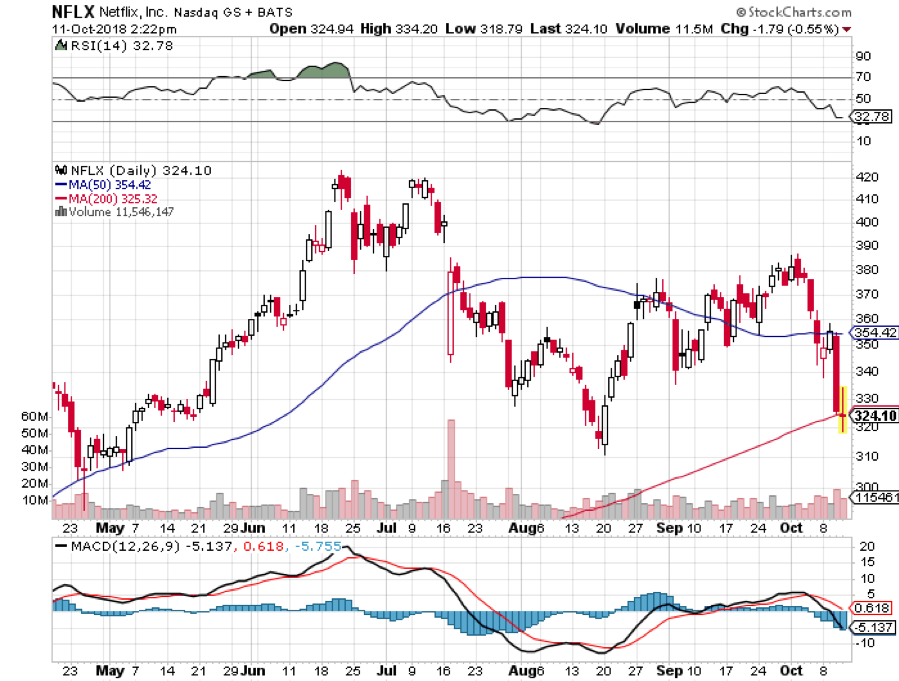
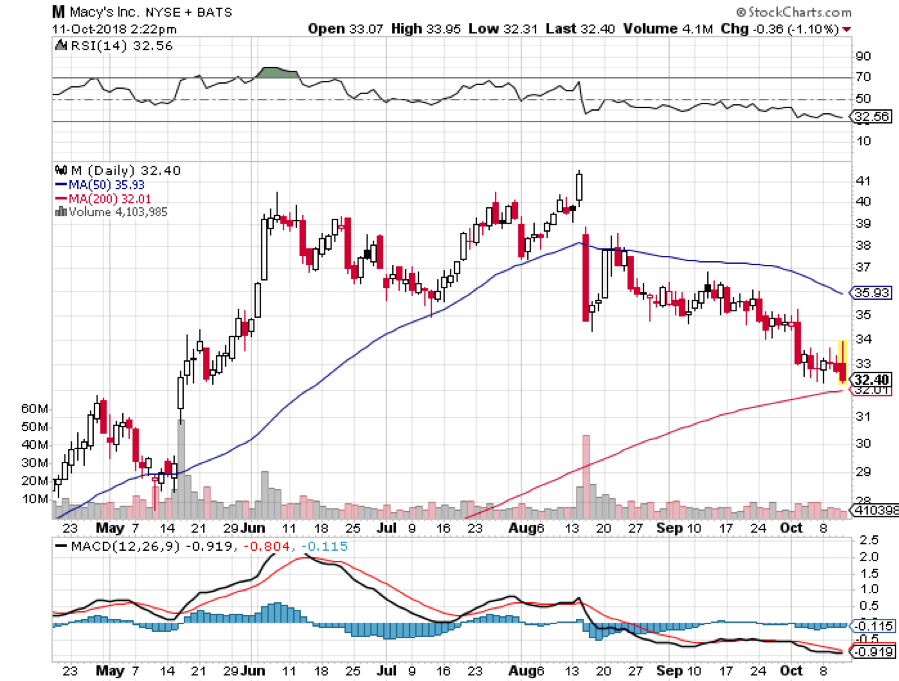

Global Market Comments
October 11, 2018
Fiat Lux
Featured Trade:
(REACHING PEAK TECHNOLOGY STOCKS),
(GOOGL), (MSFT), (NFLX), (FB), (AAPL),
(LOCKHEED MARTIN’S SECRET FUSION BREAKTHROUGH),
(LMT), (NOC), (BA)

I drove into San Francisco for a client dinner last night and had to wait an hour at the Bay Bridge toll gate. When I finally got into town, the parking attendant demanded $50. Dinner for two at Morton’s steakhouse? How about $400.
Which all underlines the fact that we have reached “Peak” San Francisco. San Francisco just isn’t fun anymore.
The problem for you is that if the City by the Bay has peaked, have its much-loved big cap technology stocks, like Facebook (FB), Alphabet (GOOGL), and Netflix (NFLX) peaked as well?
To quote the late manager of the New York Yankees baseball team, Yogi Berra, “Nobody goes there anymore because it’s too crowded.”
What city was the number one creator of technology jobs in 2017?
If you picked San Francisco, you would have missed by a mile. Anyone would be nuts to start up a new business here as rents and labor are through the roof.
Competition against the tech giants for senior staff is fierce. What, no fussball table, free cafeteria, or on-call masseuses? You must be joking!
You would be much better off launching your new startup in Detroit, Michigan. Better yet, hyper-connected low-waged Estonia where the entire government has gone digital.
In fact, Toronto, Canada is the top job creator in tech now, creating an impressive 50,000 jobs last year. Miami, FL and Austin, TX followed. Silicon Valley was at the bottom of the heap.
It’s been a long time since peach orchards dominated the Valley.
Signs that the Bay Area economy is peaking are everywhere. Residential real estate is rolling over now that the harsh reality of no more local tax deductions on federal tax returns is sinking in.
To qualify for a home loan to buy the $1.2 million median home in San Francisco, you have to be a member of the 1%, earning $360,000 a year or better.
Two-bedroom one bath ramshackle turn of the century fixer uppers are going for $1 million in the rapidly gentrifying nearby city of Oakland, only one BART stop from Frisco.
Most school districts have frozen inter-district transfers because they are all chock-a-block with students. And good luck getting your kid into a private school like University or Branson. There are five applicants for every place at $40,000 a year each.
The freeways have become so crowded that no one goes out anymore. It’s rush hour from 6:00 AM to 8:00 PM every day.
When you do drive it’s dangerous. The packed roads have turned drivers into hyper-aggressive predators, constantly weaving in and out of traffic, attempting to cut seconds off their commutes. And there is no drivers ed in China.
I took my kids to the city the other day for a Halloween “Ghost Tour” of posh Pacific Heights. It was lovely spending the evening strolling the neighborhood’s imposing Victorian mansions.
The ornate gingerbread and stained-glass buildings are stacked right against each other to keep from falling down in earthquakes. It works. The former abodes of gold and silver barons are now occupied by hoody-wearing tech titans driving new Teslas.
We learned of the young girl forced into a loveless marriage with an older wealthy stock broker in 1888. She bolted at the wedding and was never seen again.
However, the ghost of a young woman wearing a white wedding address has been seen ever since around the corner of Bush Street and Octavia Avenue. Doors slam, windows shut themselves, and buildings make weird creaking noises.
Then I came to a realization walking around Fisherman’s Wharf as I was nearly poked in the eye by a selfie stick-wielding visitor. The tourist areas on weekdays are just as crowded as they were on summer weekends 30 years ago, except that now the number of languages spoken has risen tenfold, as has the cost.
It started out to be a great year for technology stocks. Amazon (AMZN) alone managed to double off its February mini crash bottom, while others like Apple (AAPL) rocketed by 56%. But traders may have visited the trough once too often
The truth is that technology stocks have not performed since June, right when the Mad Hedge Fund Trader dumped its entire portfolio. Only Microsoft (MSFT) and Amazon (AMZN) have managed to eke out new all-time highs since then, and only just.
The rest of tech has been moving either sideways in the most desultory way possible, or suffered cataclysmic declines like Facebook (FB) and Micron Technology (MU).
Of course, the trade wars haven’t helped. It’s amazing that big tech hasn’t already been hit harder given their intensely global business models.
Nor has rising interest rates. Big cap tech companies have such enormous cash balances that they are all net creditors to the financial system and actually benefit from higher interest rates. But dear money does slow the US economy and that DOES hurt their earnings prospects.
No, I’m not worried about tech for the long term. There is no analog company that can compete with a digital company anywhere in the world.
Accounting for 26% of the stock market capitalization and 50% of its profits, it’s only a question of when we get a major new up leg in share prices, not if.
The only unknown now is whether this next leg will take place before or after the next recession. Given the rate at which interest rates and oil prices are rising in the face of a slowing global economy, it’s looking like the recession may win the race.
As our tour ended, who did we see having dinner in the front window of one of the city’s leading restaurants? A young woman wearing a white wedding dress.
Yikes! Maybe the recession is sooner than I thought.
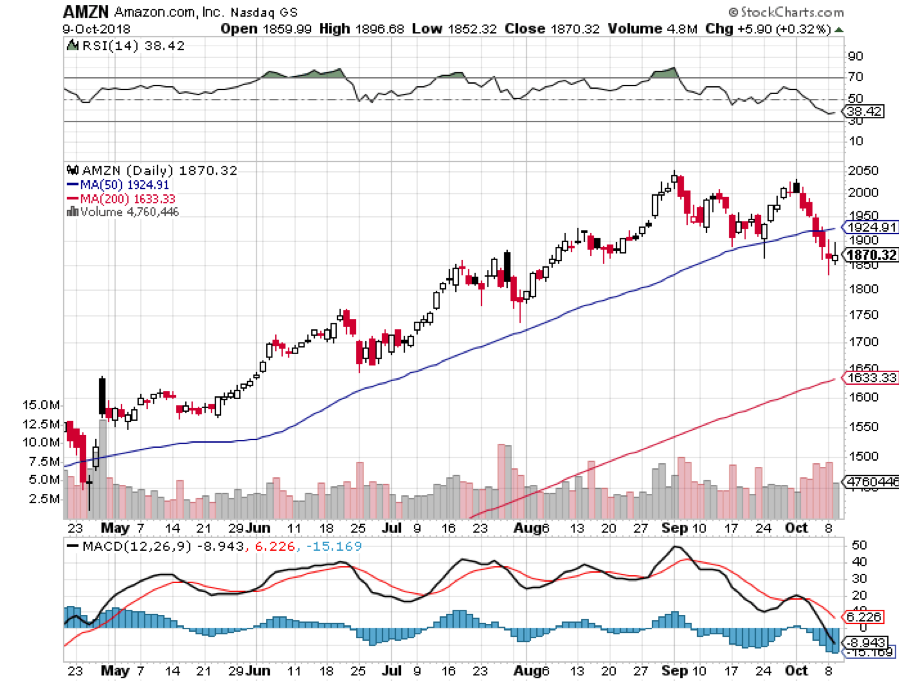
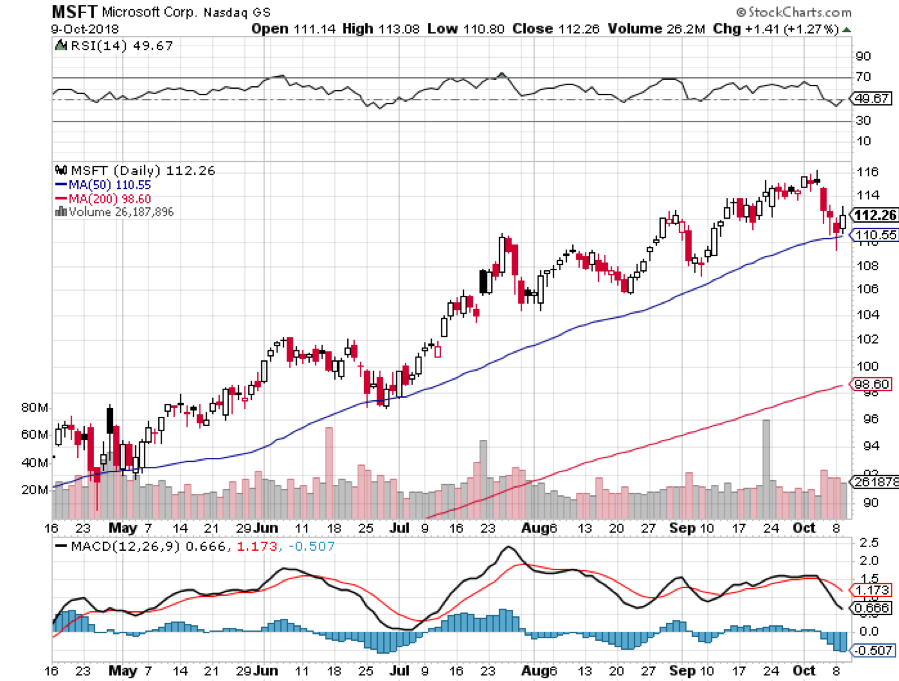
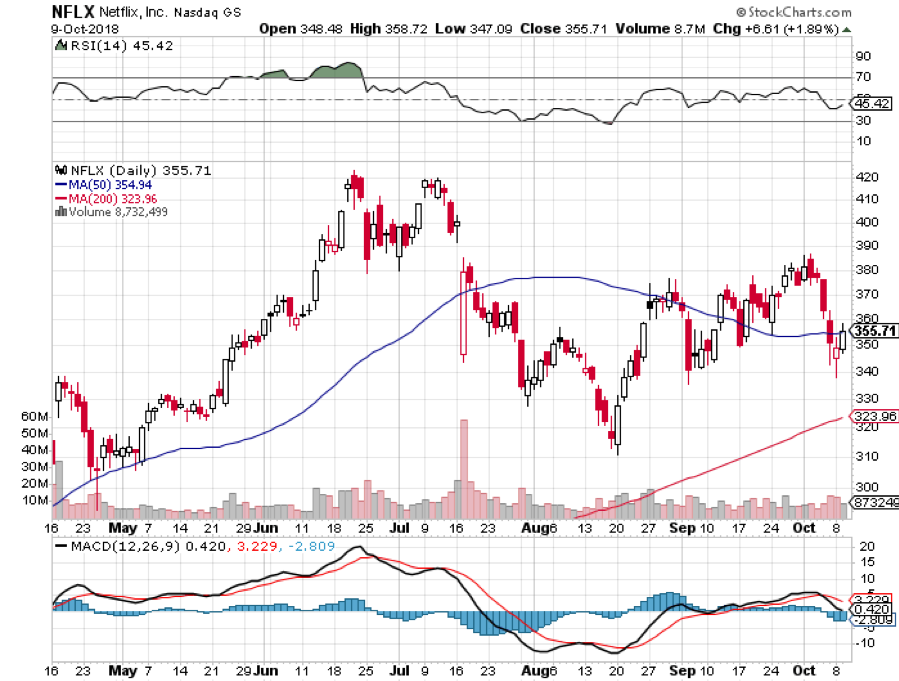
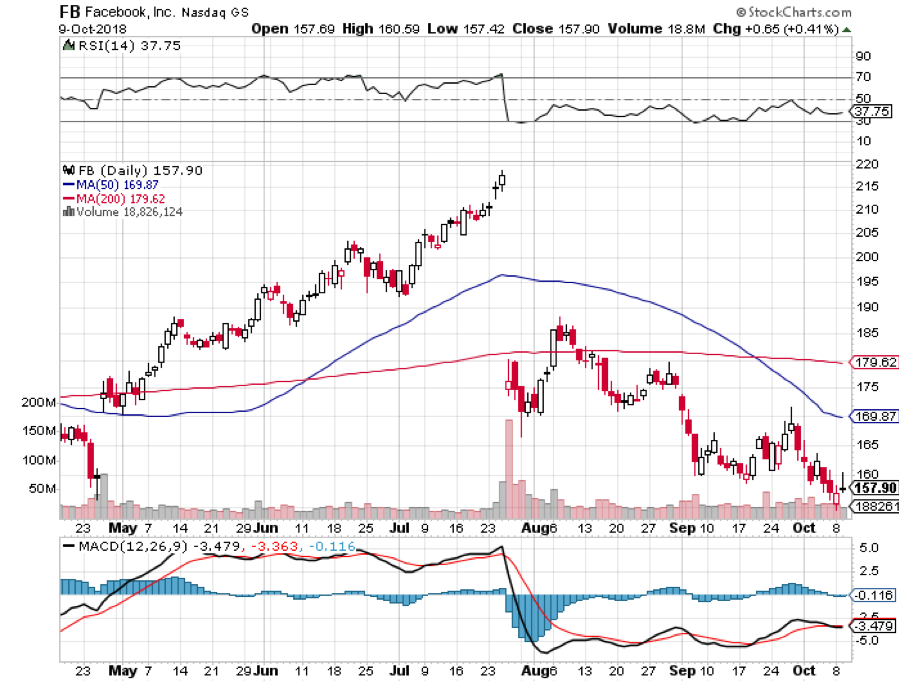
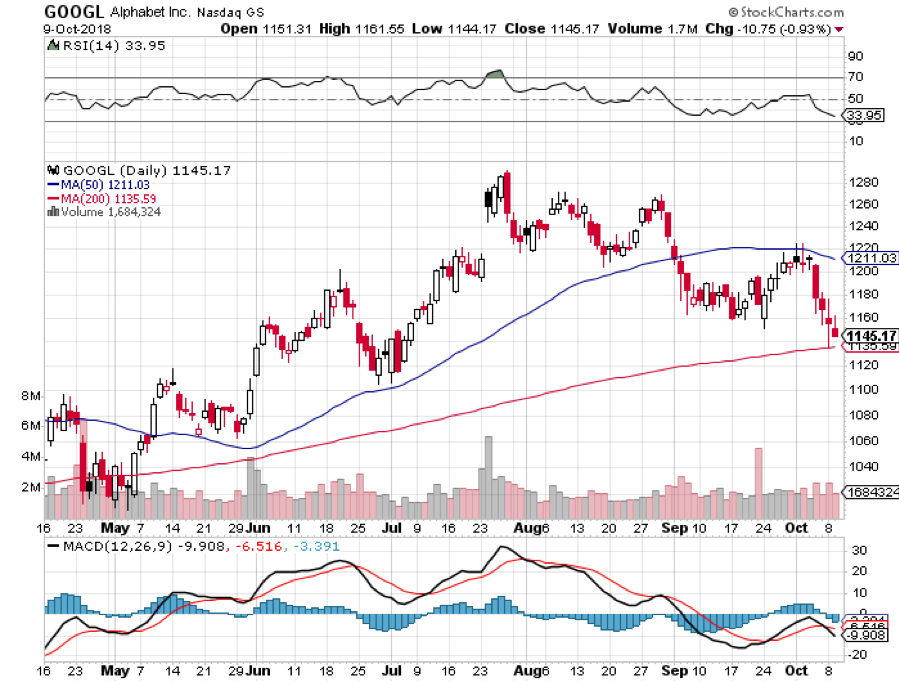
One of the blowout performers in recent years has been defense company Lockheed Martin (LMT), whose stock has doubled since 2014.
Even if we don’t get new wars, we still have several ongoing ones, the administration has promised substantially ramped up defense spending in coming years.
And thanks to a decade of downsizing and consolidation there are only a few serious players left in the sector.
That means a lot of money piling into a limited number of names.
However, there is one factor that is helping (LMT) that virtually no one outside the theoretical physics community knows about.
That would be ignition.
No, I don’t mean the rebuilt ignition you bought on eBay for the beat-up ’68 Cadillac El Dorado up on blocks in your front yard.
Lockheed Martin’s famed Skunk Works in the California high desert has finally come out of the closet and announced that it has made a major breakthrough in fusion research.
A small functioning reactor could be available in as little as three years.
If true, the news would be dynamite.
I have long been partial to Lockheed as a company as it employed my mother on an assembly line in Los Angeles to build B-17 bombers during WWII.
When I visited a secret Russian airbase in 1992 to view the wreckage of Gary Powers’ U-2 spy plane, the steel Lockheed serial number was unmistakable.
After I asked to take it home as a souvenir, my hosts replied with a very firm “Nyet!” and hurried me out of the facility, citing it as a “National Treasure.”
The new fusion technology would deliver ten times more power than conventional nuclear reactors at a fraction of the cost.
Fusion involves the combining of two hydrogen atoms to create one helium atom releasing immense amounts of power.
To know how much, simply refer to Albert Einstein’s famous equation, E = MC squared.
If successful, the discovery could make available unlimited amounts of carbon-free energy at near zero cost without creating any toxic waste.
The breakthrough relies on using a “magnetic bottle” to contain the several hundred million degrees of heat generated instead of four foot thick reinforced concrete containment structures.
So far, the stock market is clueless.
Economical fusion power, the type unleashed by thermonuclear hydrogen bombs, has long been the dream of physicists and long-term planners everywhere.
The focus of research has until now taken place at the National Ignition Facility next door to me at Lawrence Livermore National Labs in Livermore, California. There, progress has recently suffered several setbacks, cost overruns, and time delays.
Mention California to most people, and images of love beads, tie-dyed T-shirts, and Birkenstocks come to mind.
But it is also the home of the first atomic bomb which was originally designed amid the vineyards and cow pastures of this bucolic suburb.
Dr. Robert Oppenheimer of the UC Berkeley School of Mining used to keep the first ever purified piece of plutonium in a file cabinet in his office that, thankfully, was made out of steel.
If it were a wooden cabinet, the US might have lost WWII.
Today, the world’s first cyclotron has been turned into a modern steel sculpture in a traffic roundabout, not a mile from my home.
The thinking at the time was that if someone accidentally flipped the wrong switch, it wouldn’t blow up San Francisco, or more importantly, Berkeley.
The $5 billion Livermore project aims 192 lasers at a BB-sized piece of frozen hydrogen, using fusion to convert it to helium and unlimited amounts of clean energy.
The heat released by this process reaches 100 million degrees, hotter than the core of the sun, and will be used to fuel conventional steam electric power plants.
The raw material is seawater and a byproduct is liquid hydrogen which can be used to fuel cars, trucks, and aircraft. If this all sounds like it is out of Star Trek, you’d be right.
I worked with these guys in the early 70s back when math was used to make things and before it was used to game financial markets, and I can tell you there is not a smarter and more dedicated bunch of people on the planet.
If it works, we will get unlimited amounts of clean energy for low cost in about 20 years. Oil will only be used to make plastics and fertilizer, taking the price down to $10 for domestic production only.
The crude left in the Middle East will become worthless. Lumps of coal will only be found in museums, or in jewelry, its original use. If it doesn’t work, it will melt the adjacent Mt. Diablo and take me with it.
If Lockheed’s fusion success is scalable, it could send the share price on a ballistic move from current levels.
It could well also drag the rest of the defense sector with it.
That would include Northrop Grumman (NOC) and Boeing Aircraft (BA).
If you don’t get your newsletter tomorrow, you’ll know what happened.
Now, what is this switch for?
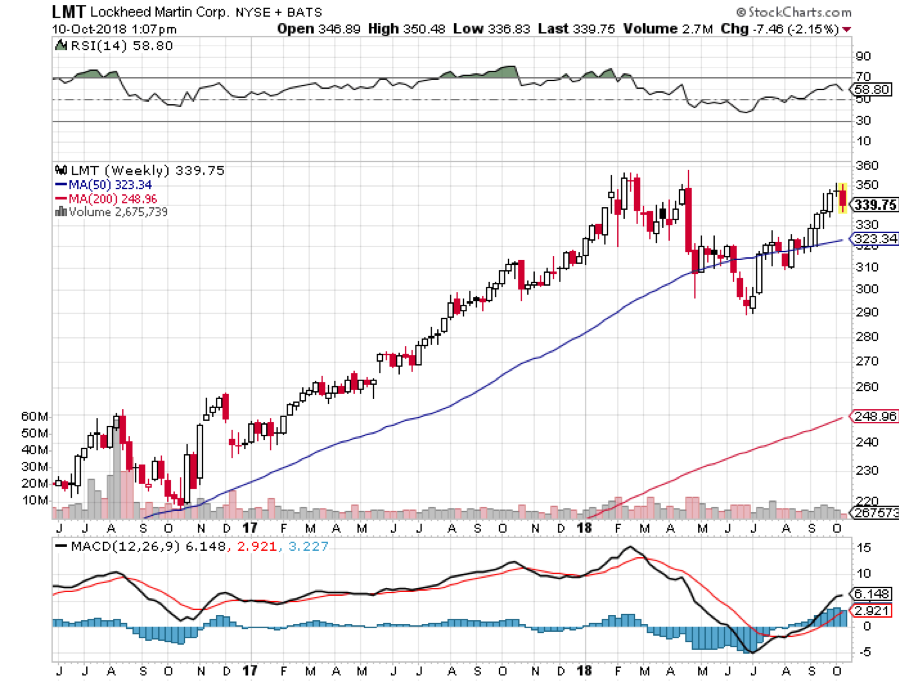
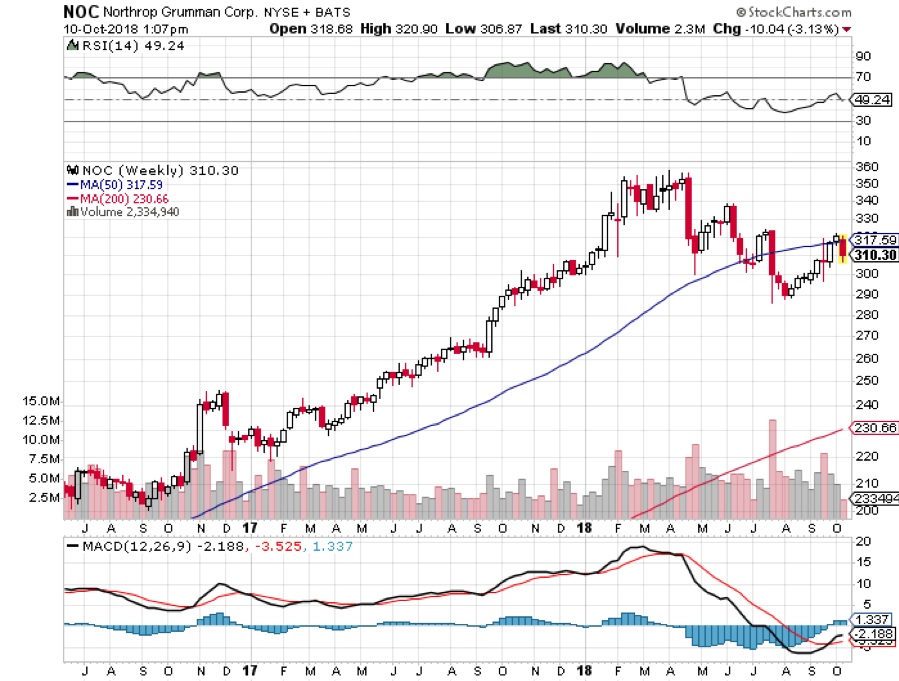


Global Market Comments
October 10, 2018
Fiat Lux
SPECIAL TESLA ISSUE
Featured Trade:
(OCTOBER 14 SAVANNAH GEORGIA STRATEGY BREAKFAST),
(THE BULL CASE FOR TESLA),
(TSLA), (GM), (F)

Legal Disclaimer
There is a very high degree of risk involved in trading. Past results are not indicative of future returns. MadHedgeFundTrader.com and all individuals affiliated with this site assume no responsibilities for your trading and investment results. The indicators, strategies, columns, articles and all other features are for educational purposes only and should not be construed as investment advice. Information for futures trading observations are obtained from sources believed to be reliable, but we do not warrant its completeness or accuracy, or warrant any results from the use of the information. Your use of the trading observations is entirely at your own risk and it is your sole responsibility to evaluate the accuracy, completeness and usefulness of the information. You must assess the risk of any trade with your broker and make your own independent decisions regarding any securities mentioned herein. Affiliates of MadHedgeFundTrader.com may have a position or effect transactions in the securities described herein (or options thereon) and/or otherwise employ trading strategies that may be consistent or inconsistent with the provided strategies.
This site uses cookies. By continuing to browse the site, you are agreeing to our use of cookies.
OKLearn moreWe may request cookies to be set on your device. We use cookies to let us know when you visit our websites, how you interact with us, to enrich your user experience, and to customize your relationship with our website.
Click on the different category headings to find out more. You can also change some of your preferences. Note that blocking some types of cookies may impact your experience on our websites and the services we are able to offer.
These cookies are strictly necessary to provide you with services available through our website and to use some of its features.
Because these cookies are strictly necessary to deliver the website, refuseing them will have impact how our site functions. You always can block or delete cookies by changing your browser settings and force blocking all cookies on this website. But this will always prompt you to accept/refuse cookies when revisiting our site.
We fully respect if you want to refuse cookies but to avoid asking you again and again kindly allow us to store a cookie for that. You are free to opt out any time or opt in for other cookies to get a better experience. If you refuse cookies we will remove all set cookies in our domain.
We provide you with a list of stored cookies on your computer in our domain so you can check what we stored. Due to security reasons we are not able to show or modify cookies from other domains. You can check these in your browser security settings.
These cookies collect information that is used either in aggregate form to help us understand how our website is being used or how effective our marketing campaigns are, or to help us customize our website and application for you in order to enhance your experience.
If you do not want that we track your visist to our site you can disable tracking in your browser here:
We also use different external services like Google Webfonts, Google Maps, and external Video providers. Since these providers may collect personal data like your IP address we allow you to block them here. Please be aware that this might heavily reduce the functionality and appearance of our site. Changes will take effect once you reload the page.
Google Webfont Settings:
Google Map Settings:
Vimeo and Youtube video embeds:
